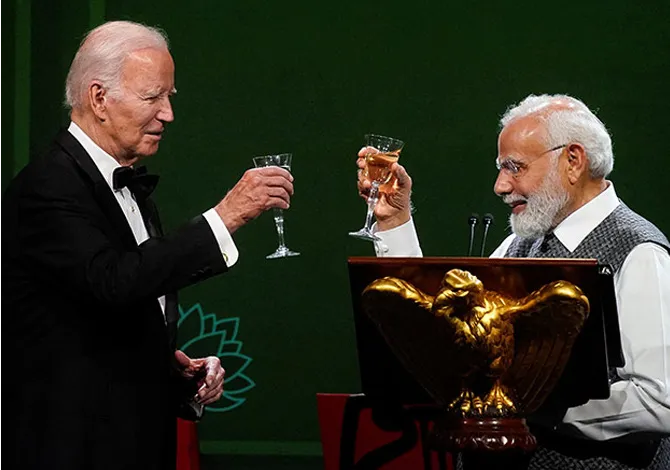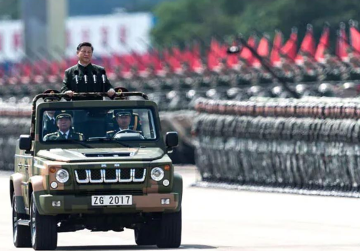After months of speculation, the United States department of justice formally charged an Indian national, accusing him of working for the Indian government to carry out the planned assassination of a Sikh separatist leader and US citizen, Gurpatwant Singh Pannun, in New York. The concerned person, Nikhil Gupta, has been charged with conspiracy and murder for hire. Emphasising that it was “contrary to government policy” to pursue extraterritorial assassinations, New Delhi described the case as a “matter of concern” and underlined that it would be “guided” by the results of a high-level inquiry committee it had set up.
The US charges came weeks after Canadian Prime Minister Justin Trudeau said there were “credible allegations” linking the Indian government to the killing of another Khalistani activist, Hardeep Singh Nijjar, in Canada in June. New Delhi strongly rejected Trudeau’s claims and accused Canada of providing shelter to “Khalistani terrorists and extremists”.
But the Indian response to American accusations has been serious. This is partly because the US has presented actionable evidence and the matter became public only after the investigation was completed. Moreover, the US government, while expecting accountability from India based on the results of New Delhi’s investigations, has been in no hurry to dismantle the relationship. Jonathan Finer, principal deputy national security adviser, suggested that there were many “difficult issues” that remain in the relationship, but he said that there was a bipartisan view in the US that both countries should seize some important opportunities on offer, both geopolitically and economically.
Despite divisive politics at home and the predilections of individual leaders, INDO-US ties have continued to maintain an upward trend.
This is what makes this moment in India-US relationship a unique one. In the words of External Affairs Minister S. Jaishankar, “there is structural soundness in the India-US relationship” and it is “certainly proofed against political check”. The world’s two major democracies are getting better at riding through the bumps in their relationship as they are being driven by a singular strategic logic. It is now a strategic imperative for the two to work closely to maintain a favourable balance of power that advances their key interests and sustains their values. This is particularly true as the centre of gravity of global politics and economics has shifted to the Indo-Pacific and the rise of China has allowed for new challenges to emerge.
The US has understood that a sustained focus on the Indo-Pacific is needed, but it will have to be buttressed by strengthening old partnerships and building new ones. The Cold War era of ‘hub-and-spokes’ alliance framework is no longer the only game in town. Even as the US works with its traditional allies like Japan, Australia and South Korea, it will also have to work with newer partners like India which may never enter into formal alliances. Informal, ad hoc coalitions will have to be built to ensure that convergences can be exploited and divergences managed. This will also require shedding older inhibitions about sharing critical technologies, given their centrality in shaping the 21st century balance of power.
Yet this change and its acceptance across both sides of the political spectrum could only happen because India, too, has evolved in the last decade. Throughout the Cold War, New Delhi understood nonalignment as an instrument to achieve strategic autonomy by shunning close partnerships. Today, that understanding is being turned on its head. Strong partnerships are deemed by Indian policy makers as imperative means to enhance strategic autonomy. Issue-based coalitions are the norm in India’s external engagement today. India today is no longer non-aligned, but is willing to align on the basis of issues. This alignment does not mean formal alliances, but it is a significant shift in Indian foreign policy discourse and practice.
The dramatic resurgence of the Quadrilateral Security Dialogue―the Quad―is the strongest manifestation of this new reality. The Quad is important and innovative, not because the US, Japan and Australia are its members; they have been close partners for decades now. The Quad’s real meaning lies in bringing India into this trilateral fold. As a non-alliance partner of the US, it is New Delhi that brings the real oomph to this platform and makes it more than the sum of its parts. China’s real discomfiture with the Quad comes from India’s participation in it and America’s acceptance of this new arrangement.
It is this newfound confidence that has allowed Indian policy makers to take ownership of ties with the US and the west more broadly. Jaishankar recently made it clear that when it comes to technology, India’s natural partners are the western economies.
Ever since the end of the Cold War, changing structural realities have propelled India-US relationship forward. Despite divisive politics at home and the predilections of individual leaders, the trajectory of these ties has continued to maintain an upward trend. More recently, the Ukraine war has underscored the divergences between the two nations. But institutionalisation of this partnership as reflected in the 2+2 arrangement has continued apace, allowing for the two nations to work through their differences “in a constructive way without derailing the broader cooperative agenda”. And it is this remarkable convergence that makes this perhaps the defining relationship of this century.
This commentary originally appeared in The Week.
The views expressed above belong to the author(s). ORF research and analyses now available on Telegram! Click here to access our curated content — blogs, longforms and interviews.




 PREV
PREV


